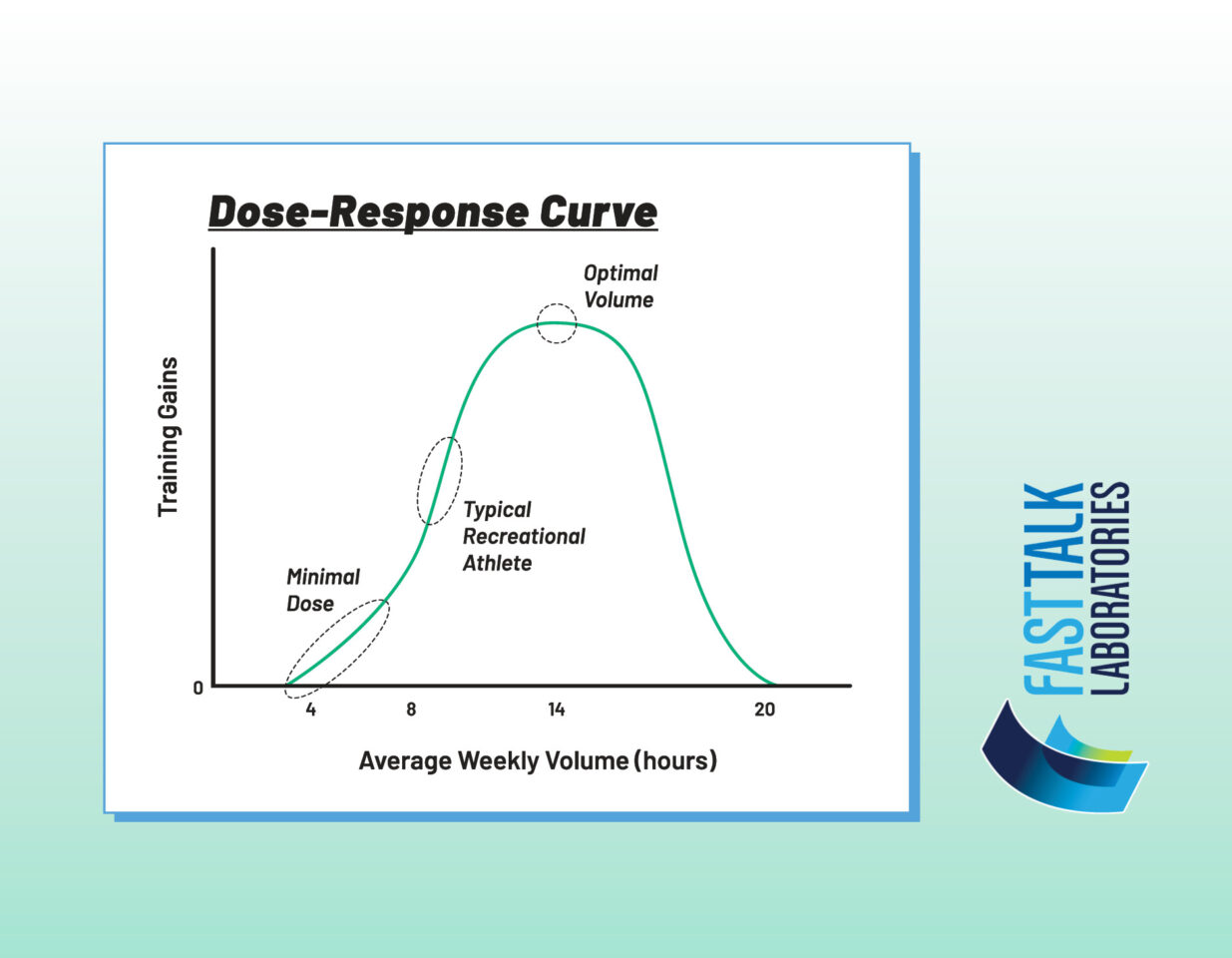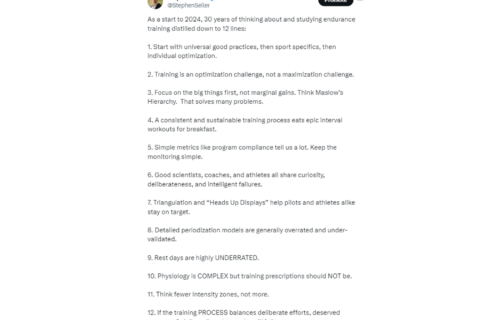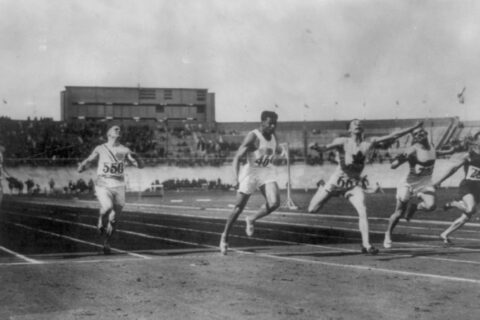We’ve all been there—work, family, friends, life—sometimes those 12 hours of training you’d planned this week just vanish into thin air. Sometimes, a training week of four to six hours is all you’ve got time for. So what does that mean for the effectiveness of the polarized training approach—and will it still work? It’s a question we get asked a lot.
Dr. Stephen Seiler developed the polarized training approach by observing how elite endurance athletes train. This fact has led to one of the most frequent criticisms of the approach.
Top athletes often train in excess of 20 hours per week allowing them to do plenty of high-intensity work and still have lots of time for slow, easy training. Critics argue that doesn’t translate well to those of us who can only do four to six hours per week: we just can’t accumulate enough training stress to see gains.
So, an important question is: How many weekly hours would a typical athlete need to train to see gains from a polarized approach?
Keep in mind we’re asking about the minimal dose and not what gives maximal gains. With any training approach—be it polarized, sweet spot, or high intensity—there is what scientists call a bell-shaped dose-response relationship. This means that initially as your weekly volume goes up so, too, do your training gains. But at a certain point, more volume will actually hurt your training. For most recreational athletes the peak of that curve is around 12 to 16 hours. Six hours per week is still on the curve, but far below the peak. Unfortunately, you just won’t see the same gains, no matter how smart or hard you train.

Likewise, there is a minimal volume below which the curve simply disappears and no one, except the most out-of-shape individuals, will see training gains. That minimum dose is highly individual, but for most people with most training approaches, it’s generally below about four hours per week.
Critics would argue that because of the large amount of easy training in a polarized approach, both the minimum dose and the optimal volume are much higher than what’s needed with other approaches.
Is four hours the minimal dose for polarized training?
Research exploring a polarized approach in recreational athletes has been limited because it’s actually proven hard to get recreational athletes to do easy runs or rides. [1] But Seiler and his team were able to do it in 2014 and address the criticism about the minimal-needed dose. They published a study titled Does Polarized Training Improve Performance in Recreational Runners? Since sweet spot training has often been touted as the most time-efficient training approach, the study compared a polarized approach to a sweet spot approach in runners who averaged 3-5 hours per week. Even at those low volumes, they found that while athletes improved with both approaches, “polarized training can stimulate greater training effects.” [2]
Since that 2014 publication, a few more studies have explored this question of the minimal dose and found that polarized training can be effective even just below four hours per week.
One of these studies, led by Dr. Sara Mahoney, found that with just under four hours per week, both a polarized approach and a cross-fit (high intensity) endurance approach improved 5K running performance, but the polarized athletes saw greater gains in VO2max. [3] Likewise, a 2020 study led by Dr. Fedrico Schena found similar gains in polarized and sweet spot runners averaging less than four hours per week, though the sweet spot athletes accomplished the gains with a 17% lower total training volume. [4]
RELATED: Polarized Training Pathway
Is 80/20 still the target at four to six hours of training per week?
The polarized approach recommends that 80% of your time is spent training easy, while 20% is spent doing high-intensity work. I will argue that if your weekly training volume is six hours or less per week, you should focus less on the 80/20 distribution and more on another key principle of polarized training: that high-intensity work should always be done sparingly. There is a body of research showing that the benefits of high-intensity work is also on a bell-shaped curve. Two high intensity sessions per week is at the peak of the curve, producing the biggest gains. Three sessions produces similar gains, but four crosses over the curve into fewer gains and a greater risk of overtraining. [1,5–7]
Granted, if you’re only training four hours per week, you likely won’t be overtraining, but the more important message is that if you spend your four weekly hours doing four interval sessions, you may actually see fewer gains than if you only did two interval sessions and made them count.
I’d also strongly recommend trying to get one longer workout into that weekly plan if time allows—an hour if you’re a runner and at least 2.5 hours if you’re a cyclist. There are gains from longer slow workouts that we can’t get any other way. These include building our stamina and forcing fast-twitch fibers to work aerobically. That 2.5-hour ride is simply going to produce better gains than several one-hour rides.
Four to six hours of polarized training will produce gains, but it’s not a panacea
It is important to remember that while you can see training improvements on four hours per week with a well-executed polarized plan, you are still far away from the optimal training dose. That’s true whether your four hours is polarized, sweet spot or all high intensity. But, the initial evidence does indicate that polarizing those four hours is going to be at least as effective as any of the other approaches, if not a little more beneficial.
RELATED: The 8 Golden Rules of Polarized Training
•••
REFERENCES
[1] Seiler S, Tonnessen E. Intervals, Thresholds, and Long Slow Distance: the Role of Intensity and Duration in Endurance Training. SPORTSCIENCE 2009.
[2] Muñoz I, Seiler S, Bautista J, España J, Larumbe E, Esteve-Lanao J. Does Polarized Training Improve Performance in Recreational Runners? Int J Sport Physiol 2014;9:265–72. https://doi.org/10.1123/ijspp.2012-0350.
[3] Carnes AJ, Mahoney SE. Polarized Versus High-Intensity Multimodal Training in Recreational Runners. Int J Sport Physiol 2019;14:105–12. https://doi.org/10.1123/ijspp.2018-0040.
[4] Festa L, Tarperi C, Skroce K, Torre AL, Schena F. Effects of Different Training Intensity Distribution in Recreational Runners. Frontiers Sports Active Living 2020;1:70. https://doi.org/10.3389/fspor.2019.00070.
[5] FOSTER C. Monitoring training in athletes with reference to overtraining syndrome. Medicine Sci Sports Exerc 1998;30:1164–8. https://doi.org/10.1097/00005768-199807000-00023.
[6] Seiler S. What is Best Practice for Training Intensity and Duration Distribution in Endurance Athletes? Int J Sport Physiol 2010;5:276–91. https://doi.org/10.1123/ijspp.5.3.276.
[7] BILLAT VL, FLECHET B, PETIT B, MURIAUX G, KORALSZTEIN J-P. Interval training at V˙O2max: effects on aerobic performance and overtraining markers. Medicine Sci Sports Exerc 1999;31:156–63. https://doi.org/10.1097/00005768-199901000-00024.




